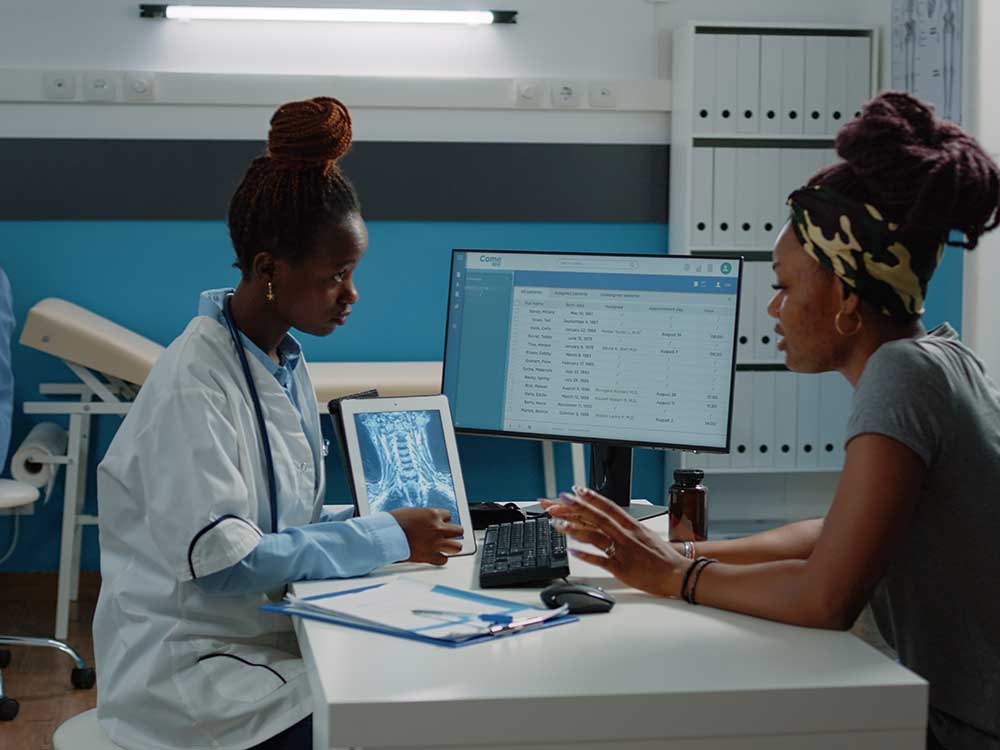Medical Administration Careers: Discovering Task Opportunities and Incomes
Medical Administration Careers: Discovering Task Opportunities and Incomes
Blog Article
Ideal Practices in Medical Administration for Improving Performance and Decreasing Prices
In the ever-evolving landscape of medical care, the search of finest methods in clinical administration is extremely important for enhancing performance and suppressing expenditures. By integrating advanced modern technologies such as digital health and wellness documents and telemedicine, doctor can streamline procedures and enhance person care. Technology alone is not a panacea; optimizing source allotment and cultivating collaborative interaction among care teams are just as vital. As organizations make every effort to stabilize high quality and cost, what methods should be focused on to achieve these twin goals? The answers to these concerns hold the key to a much more lasting healthcare system.
Leveraging Advanced Innovation
In today's swiftly advancing medical care landscape, leveraging advanced technology is no more optional however essential for efficient clinical management. The integration of digital remedies into medical care systems has actually transformed the method facilities run, streamlining processes and enhancing client treatment. Electronic Health Records (EHRs) are essential, giving detailed patient information that can be accessed instantly by authorized workers, therefore minimizing redundancy and decreasing mistakes. By streamlining patient info, EHRs get rid of the demand for troublesome documents and promote seamless communication among doctor.
Telemedicine is one more technological development that has actually transformed client communication. It uses comfort for both individuals and healthcare professionals by making it possible for remote assessments, which can minimize the requirement for in-person visits and maximize consultation scheduling. In addition, telehealth platforms can extend health care accessibility to rural or underserved areas, connecting voids in care distribution.
In addition, the use of Artificial Intelligence (AI) and device learning is coming to be progressively widespread in anticipating analytics, permitting for early detection of potential wellness problems and more informed decision-making. These technologies, when integrated efficiently, can boost diagnostic precision and personalize individual therapy strategies, ultimately causing enhanced medical care results and functional effectiveness.
Optimizing Source Allocation
Efficient source appropriation is crucial for making the most of the effectiveness of medical administration. By tactically handling sources such as employees, tools, and funds, healthcare facilities can substantially boost their functional efficiency, boost person end results, and reduce unnecessary expenses. The very first step in optimizing resource allocation involves conducting a comprehensive assessment of current assets and identifying areas where sources might be underutilized or exhausted. This evaluation ought to be data-driven, using metrics and analytics to notify decision-making processes.
Focusing on source allotment based on person requirements and service needs is vital. This involves straightening sources with high-demand areas, such as emergency situation treatment or specialized treatments, to ensure prompt and effective individual treatment. Carrying out flexible staffing versions can also maximize labor resources by readjusting personnel allowance in reaction to fluctuating individual volumes. Furthermore, embracing telemedicine and other technical services can relieve physical source restrictions by providing alternate methods for patient-provider interactions.
Monetary sources need to be carefully checked and allocated with tactical insight to sustain both temporary functional needs and lasting institutional objectives. This consists of investing in training programs that enhance staff expertises and adopting energy-efficient practices that decrease operational expenses (medical administration). Inevitably, a maximized source appropriation strategy fosters a sustainable healthcare atmosphere that is receptive, efficient, and economically sensible
Streamlining Process Procedures
When medical care centers purpose to boost functional performance, simplifying operations procedures comes to be a crucial emphasis. Reliable workflows reduce redundancy, eliminate unnecessary actions, and enhance sychronisation among healthcare professionals. This approach not just increases solution shipment however likewise improves the quality of patient treatment.

Next, modern technology integration plays a considerable duty in improving operations. Implementing electronic health documents (EHRs) webpage and digital physician order entrance (CPOE) systems lowers paperwork, lessens human mistake, and ensures info is obtainable to all relevant workers. In addition, leveraging telemedicine systems can streamline client examinations and follow-ups, lowering the strain on physical infrastructure.

Inevitably, structured workflows result in cost reductions and improved person satisfaction, fostering an extra lasting medical care environment.
Enhancing Data Management
Structure upon structured process, optimizing data monitoring comes to be a crucial part in progressing health care administration. Efficient information administration systems are important for maintaining exact individual documents, enhancing decision-making, and making certain conformity with governing requirements. By executing robust information monitoring services, healthcare facilities can boost the high quality of client care while simultaneously reducing functional costs.
One trick element of boosting information monitoring is the combination of advanced electronic health document (EHR) systems. These systems help with the smooth exchange of client info across different divisions, minimizing replication of tests and decreasing errors. A properly designed EHR system supports data analytics, enabling doctor to identify patterns and make educated decisions pertaining to patient treatment.
In addition, protecting person data is vital. Taking on extensive cybersecurity procedures, consisting of encryption and routine audits, makes certain the integrity and privacy of delicate information. This not only secures people but likewise preserves the establishment's credibility.
Purchasing personnel training is another essential aspect. Informing health care specialists on data monitoring techniques enhances their ability to properly make use of technology, bring about improved person results. In verdict, enhancing data monitoring through advanced technology and extensive training is essential for achieving efficiency and cost reduction in clinical management.
Fostering Collaborative Interaction
An essential part beforehand clinical management is promoting collective communication among healthcare professionals. Reliable interaction is vital for making certain seamless client care, maximizing therapy results, and reducing errors. By urging open discussion and sychronisation across multidisciplinary teams, medical care companies can improve their operational performance and minimize unnecessary costs.
Central to this strategy is the combination of communication innovations such as digital wellness records (EHRs) and secure messaging systems, which help with the rapid exchange of critical individual information. These devices enable medical care providers to gain access to and share data in genuine time, making certain that all employee are informed and straightened in their decision-making processes. Regular group conferences and interdisciplinary rounds can additionally advertise a culture of partnership and accountability.
Training programs concentrated on boosting interaction skills are also vital. Eventually, promoting joint interaction leads to boosted healthcare shipment and expense savings.

Conclusion
Incorporating advanced technology, such as digital wellness documents and telemedicine, along with optimized source allotment and streamlined workflow procedures, is essential for boosting effectiveness in medical administration. Reliable information administration and promoting collective communication among medical care groups are vital for decreasing redundancies and improving treatment high quality. By prioritizing preventive treatment and involving in high quality improvement campaigns, go right here health care organizations can achieve significant price financial savings and improved person results, thereby ensuring lasting health care delivery i loved this in a significantly intricate environment.
Report this page